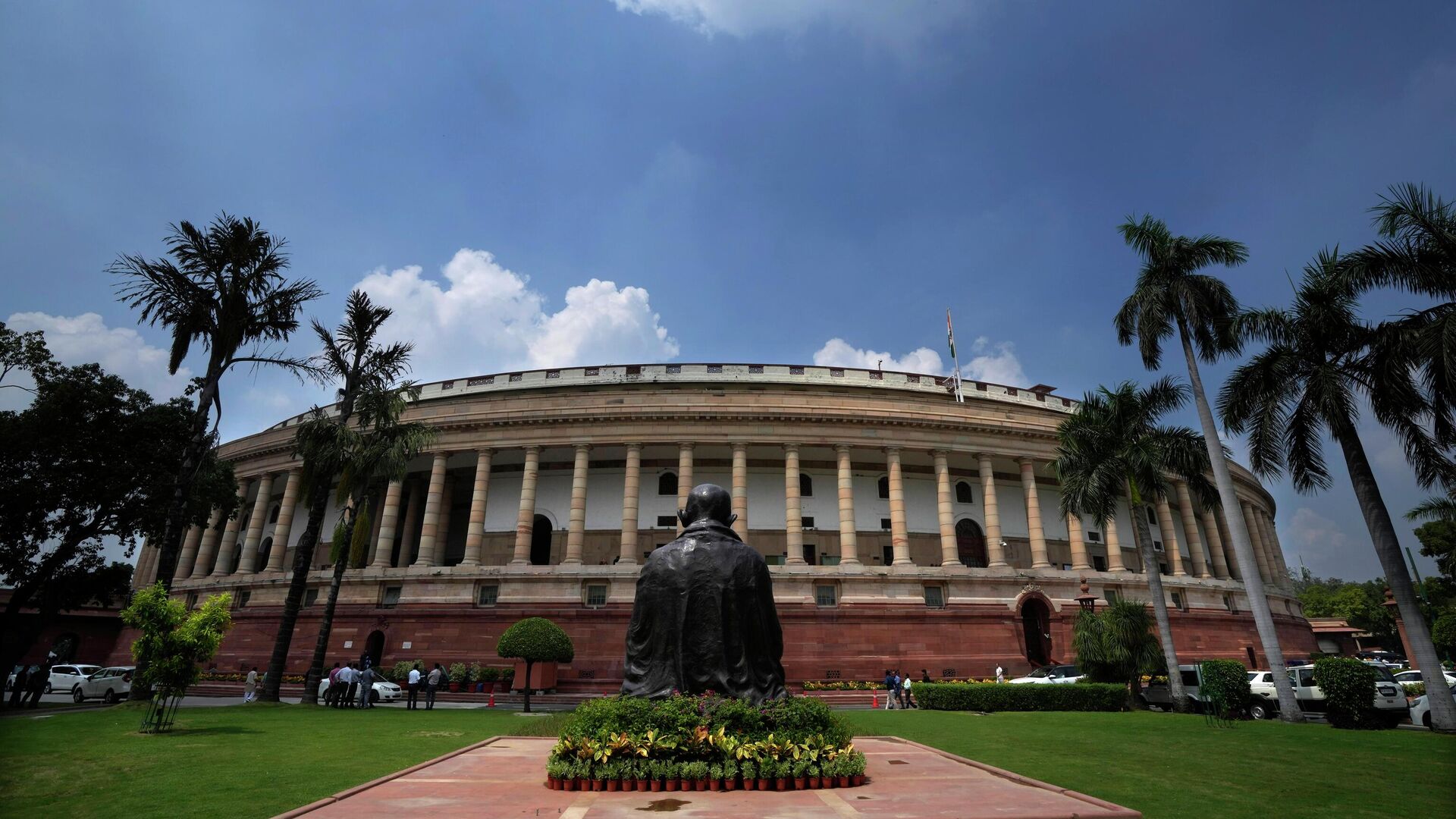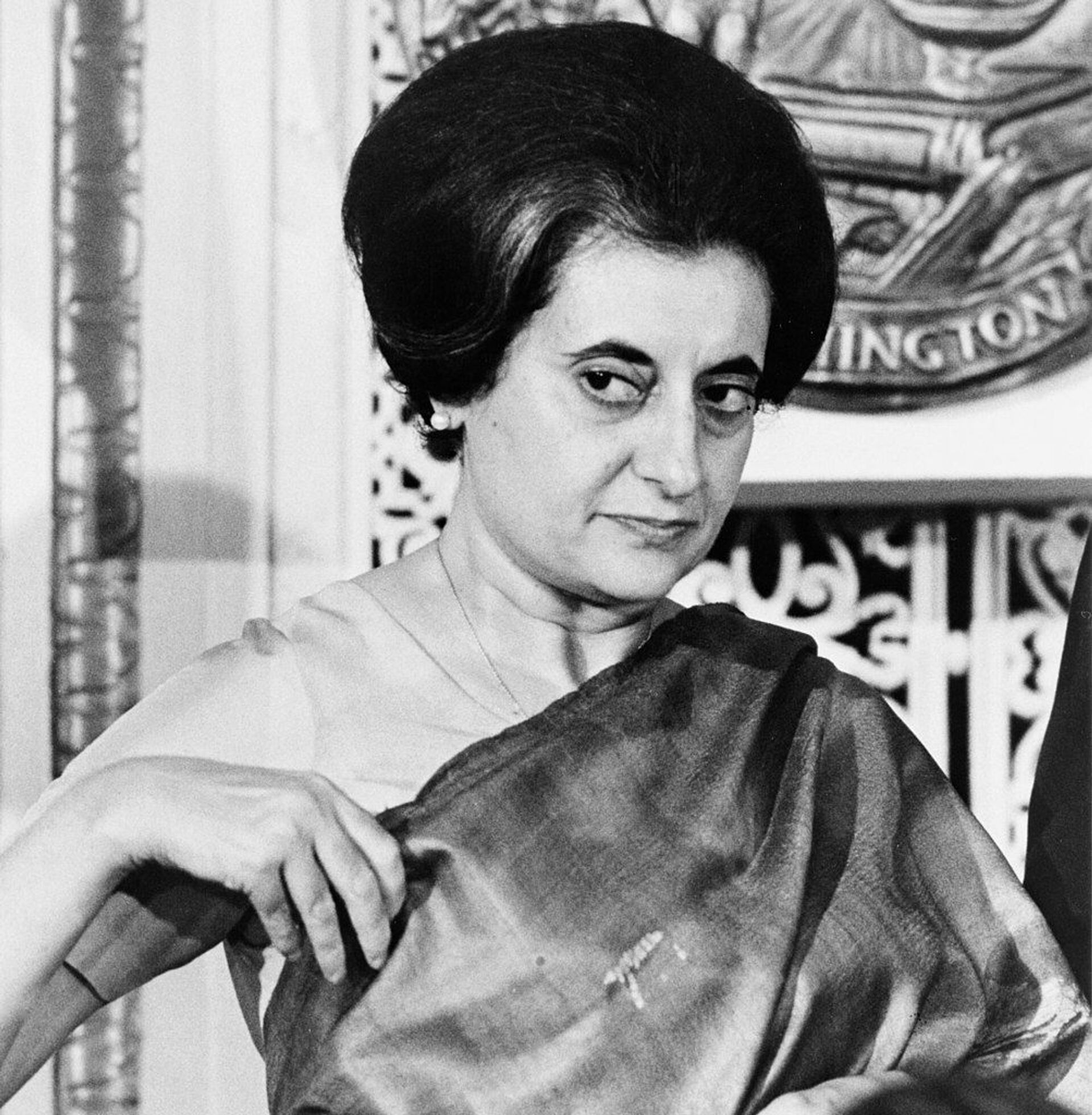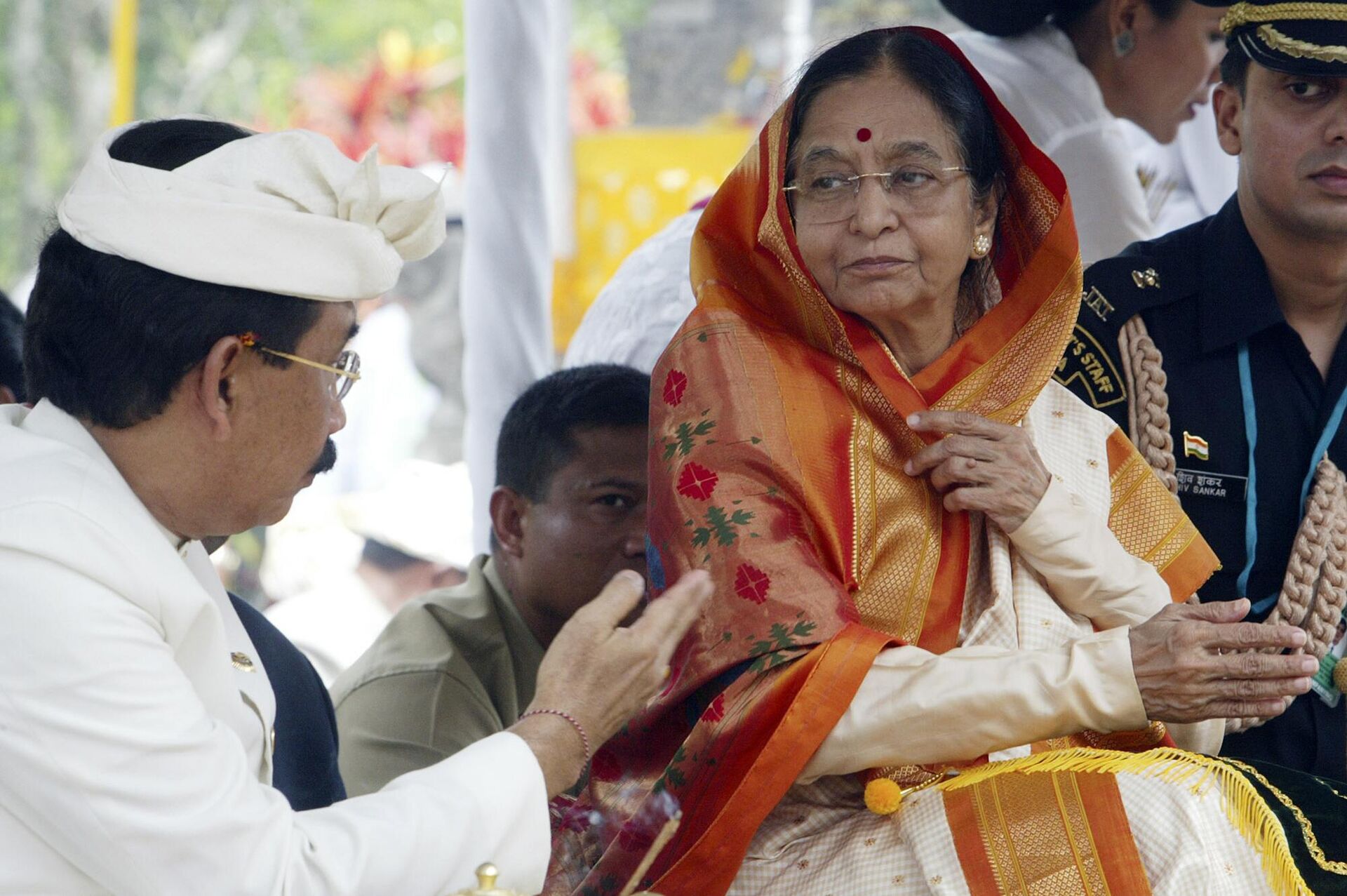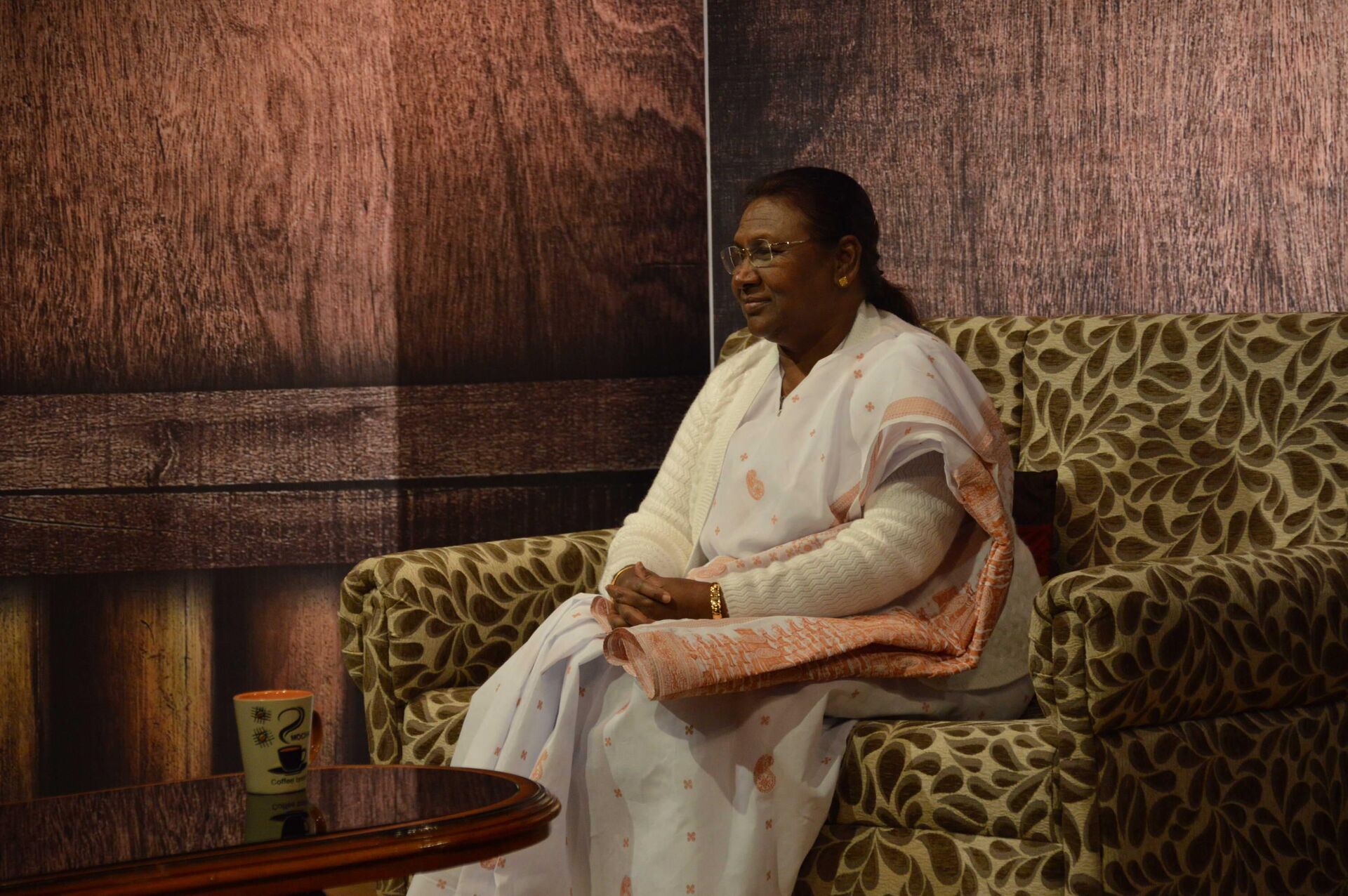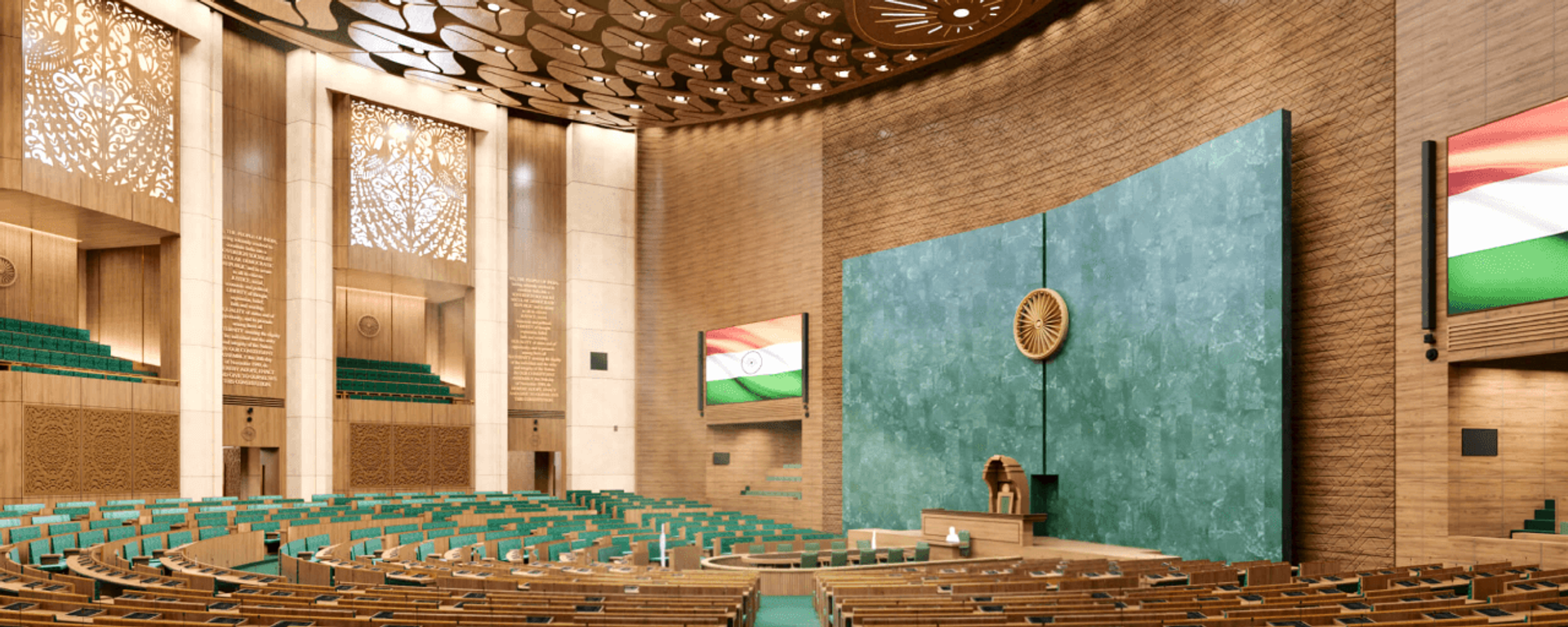https://sputniknews.in/20230919/women-reservation-bill-why-it-has-remained-suspended-in-parliament-since-1996-4328642.html
Women Reservation Bill: Why It Has Remained Suspended In Parliament Since 1996
Women Reservation Bill: Why It Has Remained Suspended In Parliament Since 1996
Sputnik India
Narendra Modi-led federal government has all set to clear the Women Reservation Bill in the special session of parliament.
2023-09-19T17:46+0530
2023-09-19T17:46+0530
2023-09-19T17:46+0530
narendra modi
rajiv gandhi
sonia gandhi
india
bharatiya janata party (bjp)
government of india
indian parliament
elections
state assembly elections
lok sabha
https://cdn1.img.sputniknews.in/img/07e7/07/14/3103671_0:160:3072:1888_1920x0_80_0_0_c92e0ebd4f031c3e9bcf79c4f05610fb.jpg
In a big push by the Narendra Modi-led federal government, all is now ready to clear the Women Reservation Bill in a special session of parliament.The Bill was tabled on Tuesday in the Parliament by Union Law Minister Arjun Ram Meghwal.What is the Women Reservation Bill?The Bill seeks to establish a quota so that at least 33 percent - one-third - of the total number of seats in the Lok Sabha and state legislative assemblies are held by women.One-third of the total number of seats will also be reserved for backward class women - Scheduled Castes and Scheduled Tribes. It is expected that seats may be allocated in rotation to different constituencies in the state or union territory.According to the Bill, the quota system will only exist for 15 years after it is introduced.History Of The BillWomen's representation in all political spheres has been a hot topic for several decades and was even being discussed when the Constitution of an independent India was being written.However, the subject only really started gaining momentum in the Seventies. In 1987, then Prime Minister Rajiv Gandhi formed a 14-member committee under then Union Minister Margaret Alva, which a year later presented the National Perspective Plan for Women in which quotas for women in elected bodies was also included.In 1992, then prime minister Pamulaparthi Venkata Narasimha Rao adopted a few of Alva's recommendations that paved the way for the reservation of one-third of seats for women in Panchayati Raj (village council body) institutions and its offices. In many states, seats are reserved for women within the quotas for Scheduled Castes, Scheduled Tribes, and Other Backward Classes (OBCs).In 1996, a Bill seeking at least 33 percent of seats in all elections be reserved for women was first introduced by the government led by prime minister Haradanahalli Doddegowda Deve Gowda. Many parties supported the Bill at the time. However, it was opposed by many OBC politicians, who wanted to change it.After the protest, the government proposed a Bill for amendment to a Select Committee of Parliament headed by veteran Communist Party of India (CPI) leader Geeta Mukherjee, along with 31 parliamentarians from different parties.The Bill has been tabled many times. However, many other national issues overshadowed the subject, and sometimes the government lacked the necessary numbers to support the Women's Reservation Bill.2008: Another Effort by CongressIn August 2005, Congress chairwoman Sonia Gandhi convened a meeting to reach consensus on the Bill with allies (also known as United Progressive Alliance (UPA)). After this, Prime Minister Manmohan Singh met opposition leaders to discuss the Bill.In May 2008, the UPA government introduced the Constitution (108th Amendment) Bill, 2008 in the Rajya Sabha [Upper House] which was referred to the Standing Committee on Personnel, Public Grievances, Law and Justice.The Standing Committee gave its report on December 2009, and the Manmohan Singh-led Cabinet approved the Bill on February 2010, the Upper House of the Parliament later passed it on 9 March. However, because of differences within the UPA and even within the Cabinet, the Bill was never brought to the Lok Sabha [Lower House], and it lapsed when the house was disbanded.Women Reservation Bill: A Poll Promise By BJPIn its 2014 and 2019 national election manifestos, the Bharatiya Janata Party (BJP), revived the topic of 33 percent reservation in parliamentary and state assemblies through a constitutional amendment.According to media reports, the recently introduced six-page document says that a third of seats in Lok Sabha and assemblies will be reserved for women and filled by direct election. However, the quota will not be applicable to Rajya Sabha or state legislative councils.Within the quota, a third of the seats will be for Scheduled Castes and Scheduled Tribes. However, the Bill does not include reservation for OBCs, as such a provision does not exist for the legislature.It is also said that the Bill won’t be applicable for the upcoming national or state elections and will only be brought into effect after 2027 or 2029.
https://sputniknews.in/20230901/indian-govt-calls-special-parliament-session-3979263.html
india
Sputnik India
feedback.hindi@sputniknews.com
+74956456601
MIA „Rossiya Segodnya“
2023
Deexa Khanduri
https://cdn1.img.sputniknews.in/img/07e6/0c/13/138923_52:0:533:481_100x100_80_0_0_cadf23d341691fc65ff2b22fd1afe584.jpg
Deexa Khanduri
https://cdn1.img.sputniknews.in/img/07e6/0c/13/138923_52:0:533:481_100x100_80_0_0_cadf23d341691fc65ff2b22fd1afe584.jpg
News
en_IN
Sputnik India
feedback.hindi@sputniknews.com
+74956456601
MIA „Rossiya Segodnya“
Sputnik India
feedback.hindi@sputniknews.com
+74956456601
MIA „Rossiya Segodnya“
Deexa Khanduri
https://cdn1.img.sputniknews.in/img/07e6/0c/13/138923_52:0:533:481_100x100_80_0_0_cadf23d341691fc65ff2b22fd1afe584.jpg
women reservation bill, state legislative assemblies, indian parliament, law minister arjun ram meghwal, margaret alva, what is women reservation bill, p. v. narasimha rao, when was women reservation bill introduced,
women reservation bill, state legislative assemblies, indian parliament, law minister arjun ram meghwal, margaret alva, what is women reservation bill, p. v. narasimha rao, when was women reservation bill introduced,
Women Reservation Bill: Why It Has Remained Suspended In Parliament Since 1996
Deexa Khanduri
Sputnik correspondent
The Union Cabinet on Monday passed the Women Reservation Bill, which will establish a quota of at least 33 percent female representation in state legislative Assemblies and Parliament. At present women only make up 14 percent of India's parliament and legislatures - far lower than the world average.
In a big push by the Narendra Modi-led federal government, all is now ready to clear the Women Reservation Bill in a special session of parliament.
The Bill was tabled on Tuesday
in the Parliament by
Union Law Minister Arjun Ram Meghwal.What is the Women Reservation Bill?
The Bill seeks to establish a quota so that at least 33 percent - one-third - of the total number of seats in the Lok Sabha and state legislative assemblies are held by women.
One-third of the total number of seats will also be reserved for backward class women - Scheduled Castes and Scheduled Tribes. It is
expected that seats may be allocated in rotation to different constituencies in the state or union territory.
According to the Bill, the quota system will only exist for 15 years after it is introduced.
Women's representation in all political spheres has been a hot topic for several decades and was even being discussed when the Constitution of an independent India was being written.
However, the subject only really started gaining momentum in the Seventies.
In 1987, then Prime Minister
Rajiv Gandhi formed a 14-member committee under then Union Minister Margaret Alva, which a year later presented the National Perspective Plan for Women in which quotas for women in elected bodies was also included.
In 1992, then prime minister Pamulaparthi Venkata Narasimha Rao adopted a few of Alva's recommendations that paved the way for the reservation of
one-third of seats for women in Panchayati Raj (village council body) institutions and its offices. In many states, seats are reserved for women within the quotas for Scheduled Castes, Scheduled Tribes, and Other Backward Classes (OBCs).
In 1996, a Bill seeking at least 33 percent of seats in all elections be reserved for women was first introduced by the government led by prime minister Haradanahalli Doddegowda Deve Gowda. Many parties supported the Bill at the time. However, it was opposed by many OBC politicians, who wanted to change it.
After the protest, the government proposed a Bill for amendment to a Select Committee of Parliament headed by veteran Communist Party of India (CPI) leader Geeta Mukherjee, along with 31 parliamentarians from different parties.
The
Bill has been tabled many times. However, many other national issues overshadowed the subject, and sometimes the government lacked the necessary numbers to support the Women's Reservation Bill.
2008: Another Effort by Congress
In August 2005, Congress chairwoman
Sonia Gandhi convened a meeting to reach consensus on the Bill with allies (also known as United Progressive Alliance (UPA)). After this, Prime Minister Manmohan Singh met opposition leaders to discuss the Bill.
In May 2008, the UPA government introduced the Constitution (108th Amendment) Bill, 2008 in the Rajya Sabha [Upper House] which was referred to the Standing Committee on Personnel, Public Grievances, Law and Justice.
The Standing Committee gave its report on December 2009, and the Manmohan Singh-led Cabinet approved the Bill on February 2010, the Upper House of the Parliament later passed it on 9 March.
However, because of differences within the UPA and even within the Cabinet, the Bill was never brought to the Lok Sabha [Lower House], and it lapsed when the house was disbanded.
Women Reservation Bill: A Poll Promise By BJP
In its 2014 and 2019 national election manifestos, the Bharatiya Janata Party (BJP), revived the topic of 33 percent reservation in parliamentary and state assemblies through a constitutional amendment.
According to media reports, the recently introduced six-page document says that a third of seats in Lok Sabha and assemblies will be
reserved for women and filled by direct election. However, the quota will not be applicable to Rajya Sabha or state legislative councils.
Within the quota, a third of the seats will be for Scheduled Castes and Scheduled Tribes. However, the Bill does not include reservation for OBCs, as such a provision does not exist for the legislature.
It is also said that the Bill won’t be applicable for the upcoming national or state elections and will only be brought into effect after 2027 or 2029.
